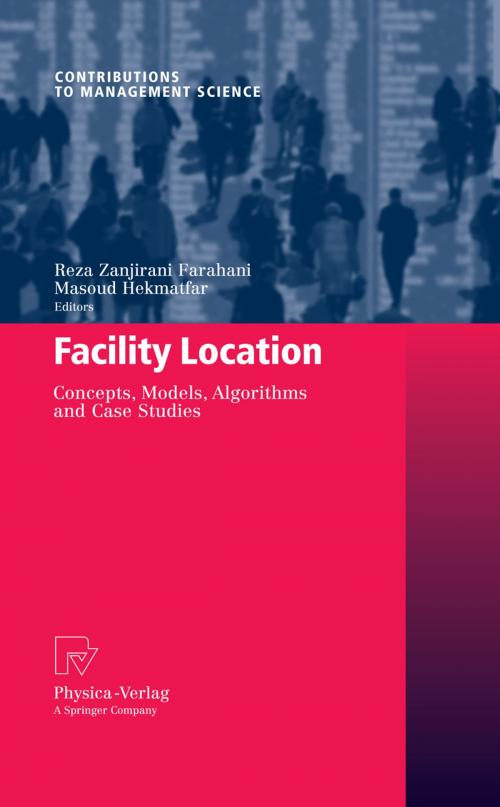Facility Location
Concepts, Models, Algorithms and Case Studies
Business & Finance, Management & Leadership, Production & Operations Management, Management| Author: | ISBN: | 9783790821512 | |
| Publisher: | Physica-Verlag HD | Publication: | July 9, 2009 |
| Imprint: | Physica | Language: | English |
| Author: | |
| ISBN: | 9783790821512 |
| Publisher: | Physica-Verlag HD |
| Publication: | July 9, 2009 |
| Imprint: | Physica |
| Language: | English |
This book deals with location problems. Location problems establish a set of facilities (resources) to minimize the cost of satisfying a set of demands (customers) with respect to a set of constraints. There are four components that describe location problems: customers, who are assumed to be already located at points or on routes, facilities that will be located, a space in which customers and facilities are located, and a metric that indicates geographical and chronological distances between customers and facilities. This book describes these parts in each specific location model. Location models are used in a variety of applications such as locating warehouses within a supply chain to minimize the average time to market, locating noxious material to maximize its distance to the public, etc. In this book, readers can find these applications exemplified by real-world cases for each particular model. The relationship between location problems and other areas such as supply chains is also considered here.
This book deals with location problems. Location problems establish a set of facilities (resources) to minimize the cost of satisfying a set of demands (customers) with respect to a set of constraints. There are four components that describe location problems: customers, who are assumed to be already located at points or on routes, facilities that will be located, a space in which customers and facilities are located, and a metric that indicates geographical and chronological distances between customers and facilities. This book describes these parts in each specific location model. Location models are used in a variety of applications such as locating warehouses within a supply chain to minimize the average time to market, locating noxious material to maximize its distance to the public, etc. In this book, readers can find these applications exemplified by real-world cases for each particular model. The relationship between location problems and other areas such as supply chains is also considered here.















